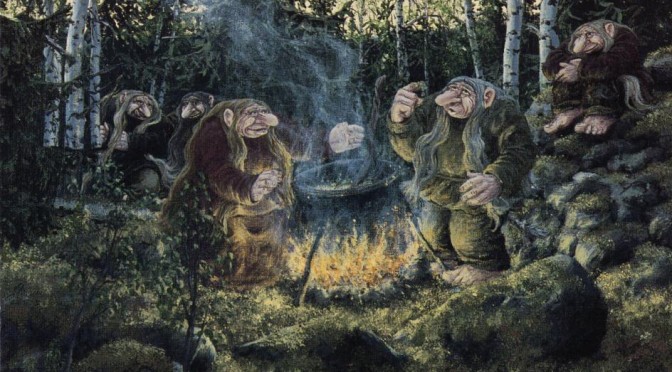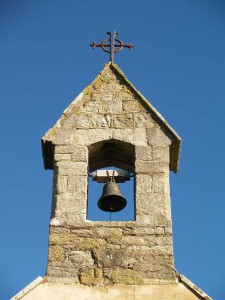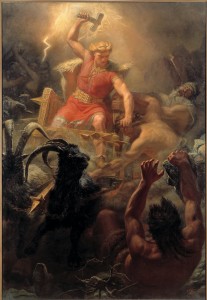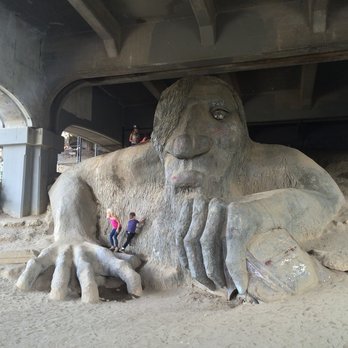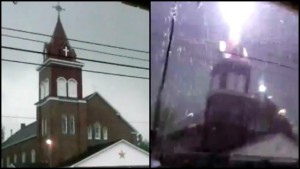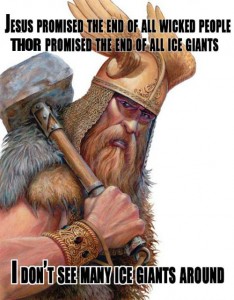Trolls, bane of the internet! Found in almost every comment section known to man, Trolls are one of the most prevalent scavengers on the savannahs of the information super highway. Feeding on tears, hatred, and a feeling of self satisfaction that distracts them from their underwhelming penis – they are bad vibe omnivores. The only known natural predators of Trolls are facts, common sense, and being ignored.
And, in accordance with that, they’re not the ones I’m going to talk about today.
The far more interesting version of the word is a piece of folklore from our Scandinavian friends to the north. The Troll, a creature that comes in many varieties, is a fearsome figure of folklore known to live in dark places. The stories often depict them in caves or under bridges, asking riddles of those who would try to cross – especially religious figures. They can smell the blood of a Christian man and have been known to eat them should they enter the wrong places or answer those riddles incorrectly. They’re large, incredibly powerful, and nothing like the impotent little weasels we apply the word to today.

So, of course, if humans were to live next to these creatures they would have to have some form of weakness. Like their modern internet cousins, Trolls would just be too dangerous without some fatal flaw to let humanity go on with their day to day lives. And the standard tropes are mostly there: sunlight, lightning, divine wrath, etc. But what has to be the most profound of them all is their complete disdain for… church bells.
Yeah, that’s a “new” one….
For Whom The Bell Tolls
Except, no, it’s been around forever. The idea that Trolls were driven away by the sound of church bells has been so common for so long that a lot of people in the region attribute the lack of Trolls in Scandinavia to the fact the bells don’t shut up long enough for them to return. Now whether or not these people actually believe that or are just saying it with a grin on their face is subjective. But regardless of how serious the person saying it might actually be, the fact remains – Trolls hate church bells.
It’s not even a matter of holy ground like with the likes of Vampires or other ghoulish creatures. Trolls are completely immune to it and have been described in stories attacking churches as they were being built to prevent the bells from going up. They weren’t weakened by the supposed holy power on those grounds, capable of lifting large rocks to do their dirty work like flying wrecking balls. But yet, despite this impunity to the sacred grounds the churches are built on, the bells are powerful enough to drive them from the land completely. If it’s not the holy power…what is it?
Some would argue it’s a matter of loud sounds, period. The Trolls are also said to be run off by the sound of thunder and that they’re completely terrified of your average thunderclap. But despite this connection of “really loud sound”, the bells are always specified to be those of a church. If it were just the volume or the frequency, any town bell could probably do the trick. Yet, no, it’s specifically a church bell, and the Trolls target the churches in the old stories to make sure those bells, above any others, wouldn’t go up.
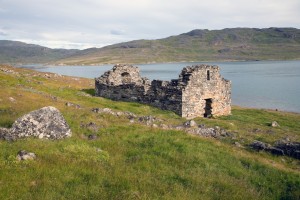
Really, it’d just be a peculiar little footnote if it weren’t for the connection to thunder. But as you approach that part of the myth, things start to get fun again. Because the reason they dislike the thunder and the church bells is exactly the same – that’s the sound of a pissed off god.
Like the Elves and Dwarves of a post from not far back, a lot of fun comes from studying the origins of the Trolls themselves. The word “Troll” (well, their equivalent of it) to the Norse was actually a pretty commonly used term that covered multiple creatures – less a label for a specific race and more for a type of entity (much like how “faery folk” covers anything from Hobs to Leprechauns depending on the region). These creatures ranged anywhere from wizards to nature spirits and were generally only loosely associated by the fact they fell into a certain relationship with humanity. This translates to the modern day too, with most of the newer depictions of Trolls being represented with different physical appearances while being separating by living arrangement such as caves, cliffs, or bridges.
But the place where the label really starts to make sense of the bells situation is when you realize that Troll was also often applied to “Jotun” – Norse giants. The Jotun were one of the races of the Norse cosmology which lived in a world separate from humans and would often threaten the realm of Midgard from their home in Jotunheim. People feared the Jotun for bringing ice and fire upon them and the story of Ragnarok even gives credit to the Jotun for literally ending the world. To the Norse, the Jotun were natural disasters waiting to happen and were the cause of many of their ills. And, because of this, there was one god in particular that the Norse (outside of the Vikings) were particularly fond of…
Thor was the god of the people, the hero who would fight off the giants and protect mankind from the disaster those giants could bring. Thunderstorms were said to be the result of Thor’s battle with the giants in the heavens as he prevented the giants from reaching the land (and brought rain to boot, which was great for the Norse farmers who had limited growing times to begin with). While Odin may have been the god who was most worshiped by the war-oriented Vikings, the worship of Thor was incredibly wide spread for this protective nature.
So the fear of thunder was easy to connect. If the more modern Trolls were based on Jotun, then that means they were the things that Thor spent a great deal of his time wailing on. Even as the region converted to Christianity, there were many who attributed the lack of Trolls just as much to the accuracy of lightning bolts as to the toll of church bells. And, of course, if lightning is striking these things down then they would run like hell the minute they heard even a hint of thunder. Some versions of the story today even go so far as to say that they just naturally run from all loud sounds on the chance it could be thunder.
But once again, I’m drawn back to the fact they attack the churches. Because, while the sound thing totally works out, they still focus their attacks on churches and no others. One easy explanation is that church bells are the most common large bells to be found, and this could cover it. But as I went over this, a theory came to mind that amused me too much to discount.
Everything past this point is purely theoretical, but hear me out and I think you’ll enjoy the direction it goes too.
You see, Catholic and Protestant churches have had a storied history with their relationship to lightning. The Christian belief is that lightning is the product of Satan and other demons in the air and that the only way to banish it would be through sanctifying the ground that it struck. Basically, lightning is evil and evil can only be prayed away. This led to the amusing problem of Churches condemning the invention of lightning rods for a very long time as it was a cheat and meant they weren’t really trusting in God to protect them. But that’s not a view shared by the early converts in Scandinavia. After all, up until recently, those people believed that the lightning was saving them from disaster – not bringing it.
So, anyone familiar with lightning knows that it tends to be drawn towards metal, tall objects, and anything that could give it an easier path to the ground. And you know what fit those criteria best in old European villages?
The typical response to this was to start blessing everything in the church as much as possible, especially the things that would go into the steeple. The cross, ornaments, and yes, even the church bell had to be sanctified and blessed regularly to make sure they could “fend off the wicked intents of Satan”. Of course, this didn’t work, because lightning is lightning and tall things are tall things and the two of them tended not to mix. Until fairly recent in our history, Churches commonly burned down from lightning strikes because they simply refused to use lightning rods. Even today they tend to get flak for using the things on crossed now. But you could understand how they would come to think of lightning as the work of Satan as their house of worship turned to cinders.
But…that view may not have necessarily been shared by the locals.
As I’ve pointed out often in Alternative Mythologies, a lot of converts to Christianity back in the day found ways to keep their old traditions in line with the new religion. Many African religions found ways to dovetail their version of God with the Christian one. And, as the Christian holidays show, the same held true for the Norse. Easter, Halloween, and Christmas all have Norse influences or were directly lifted from Norse tradition. In fact, the story of how Yuletide merged with Christmas states that the earliest conversions were done slowly, with Yule being moved to overlap Christmas to ease them into changing the celebration. With the Norse people having to be eased into the concept, one thing becomes clear – they held onto their old beliefs even after the place started to convert.
So picture yourself as a Scandinavian during the rise of Christianity and imagine watching these priests blessing everything going into the spire. They tell you that they’re trying to fend off evil forces that bring ruin to mankind and that the blessing they’re doing is going to give the church the ability to fight off the wicked forces of the world. You watch them bless the cross, the ornaments, the bell and everything in between. And then, after they’ve erected the thing, blessed and sanctified, it gets struck by lightning. Hell, it probably gets struck by lightning more than anything you’ve ever seen – especially that crazy bell tower.
Clearly, Thor approves.
And what about when the place lit up? Well, one of the Norse traditions held onto long after the place started to convert was the practice of the yuletide fires. Now observed primarily as the Yule log, the general idea was to light fires to fend off the forces of darkness and “holy shit it’s cold here”. One of the fires lit at this time was generally within their places of worship to be used for sacrifices. Now, this part is a bit of a stretch, and not at all something that I think actually plays a factor, but I like to believe at least one Scandinavian smart-ass joked that Thor was warming the place for them.
To put it bluntly, everything that the Christians hated about lightning were things the Scandinavians absolutely loved. They had seen it as a force of good for so long that the idea of it being “the work of Satan” just wouldn’t have rung true to them. And, after watching all that blessing happening, it wouldn’t surprise me at all if they saw the ritual’s inability to fend off lightning as a success rather than a failure and that the bell was just as much part of Thor’s power as the thunder. After a couple good bolts of lightning, that bell was as linked to Thor as anything else in the land. And wouldn’t you continue to believe that in their place? After all, Thor’s track record up to that point was pretty solid, so why question it?
And if you believed that there were massive elemental creatures lumbering through the lands, scared off only by the sound of thunder and the potential smiting that would come from it…
Wouldn’t you want that kind of protection to apply to your new faith too?
(I write novels. If you’re amused by this, you might be amused by other things I’ve done. Hell, you’d almost definitely be amused by things on my twitter.)


